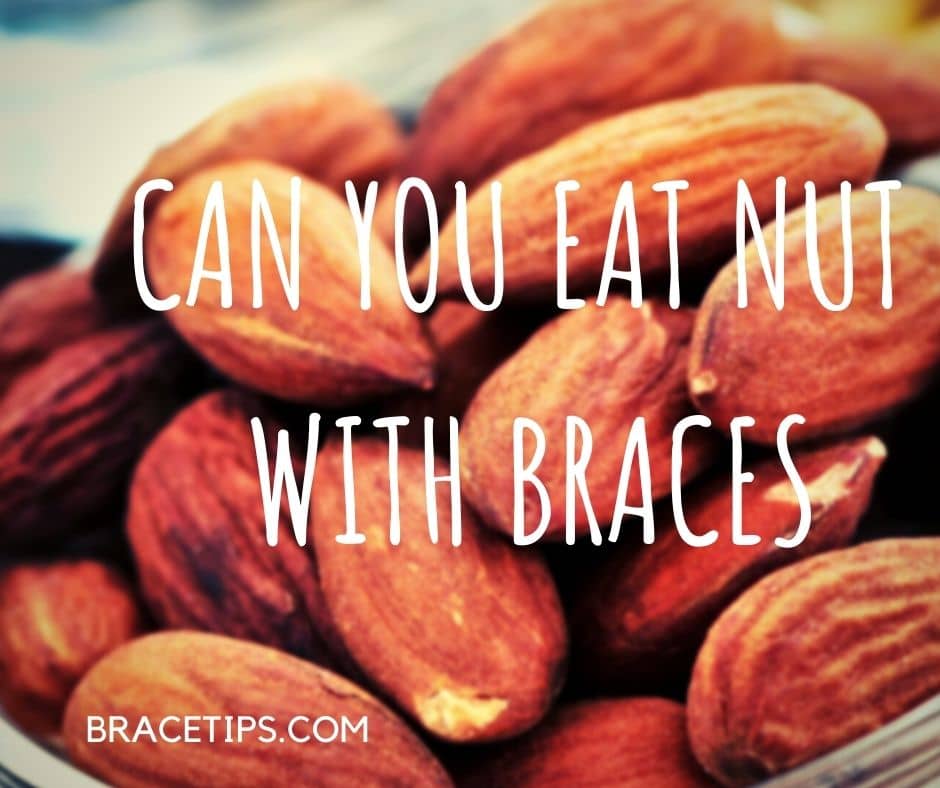Can You Eat Nuts With Braces
Braces often come with a list of dietary restrictions, and among the commonly cautioned foods are nuts and seeds. These crunchy, nutrient-rich snacks can pose a challenge for those undergoing orthodontic treatment. But does this mean you have to bid farewell to your favorite nuts entirely. Let’s dive into the nuances of consuming nuts with braces and how to navigate this situation without compromising your orthodontic journey. However, they come with a list of foods to avoid to prevent damage to the braces and maintain oral hygiene. Among these restricted items are nuts and seeds, known for their hard texture and potential to cause complications with braces. In this comprehensive guide, we’ll delve into whether you can eat nuts with braces, how to navigate consuming nuts safely, and specifics regarding popular nuts like pistachios, almonds, pecans, and walnuts while undergoing orthodontic treatment.
Understanding Dietary Restrictions with Braces
When undergoing orthodontic treatment, orthodontists typically advise against certain foods that can potentially damage or dislodge braces. Sticky, hard, or crunchy foods are on top of this list as they can bend wires, dislodge brackets, or even cause breakage, leading to prolonged treatment and discomfort.
What You Need to Know About Eating Nuts with Braces
Types of Nuts and Their Braces Compatibility
Explore different types of nuts – pistachios, almonds, pecans, walnuts – and how their hardness and texture can impact braces differently.
Tips for Safely Consuming Nuts
Provide practical advice on how to eat nuts safely with braces, including suggestions for preparation, moderation, and alternative ways of enjoying nuts without risking damage to braces.
Can You Eat Nuts with Braces?
The question that lingers in many minds: Can nuts be part of a braces-friendly diet? The answer isn’t a simple yes or no. The concern with nuts lies in their hard texture, which can pose a risk to braces. However, with careful consideration and certain techniques, enjoying nuts with braces is indeed possible. The hardness and texture of nuts can potentially damage the braces, bend wires, or cause brackets to come loose. Moreover, the small pieces of nuts can easily get lodged between teeth and braces, leading to discomfort and increasing the risk of plaque buildup. However, with careful precautions and modifications in consumption techniques, it’s possible to enjoy nuts without jeopardizing the integrity of your braces.
Evaluating Different Types of Nuts
Let’s break down various types of nuts to understand their textures and the considerations associated with each:
Pistachios
Pistachios have a slightly softer texture compared to some other nuts, making them a relatively safer option for consumption with braces. However, caution and moderation are key when eating them. You can opt for shelled, unsalted pistachios or pistachio butter to enjoy the flavor without risking damage to your braces.
Almonds
Almonds, with their firm texture, might present a higher risk of causing damage to braces. But there are ways to still enjoy them without compromising orthodontic appliances. Consider sliced or slivered almonds or switch to almond butter as a safer alternative.
Pecans
These nuts, known for their robust crunch, are usually on the higher end of the risk spectrum when it comes to eating with braces. Careful techniques are crucial if you opt to include them in your diet. Opt for chopped or ground pecans or incorporate pecan flavor through softer foods to avoid potential damage.
Walnuts:
Walnuts have a robust shell and dense texture, making them unsuitable for consumption with braces. Explore walnut butter or incorporate crushed or finely chopped walnuts into softer dishes instead.
Braces and Diet Restrictions
Braces are a common orthodontic treatment, designed to straighten teeth and correct dental issues. One significant aspect of braces that often concerns individuals is their diet restrictions. Certain foods can pose challenges or risks to those wearing braces, and nuts frequently fall into this category.
How to Eat Nuts with Braces
Strategies for Safe Consumption
- Choose Softened Nuts: Opt for softer varieties of nuts like cashews or pistachios if you’re keen on having nuts during your orthodontic treatment. Opt for softer varieties of nuts like cashews or peanuts that are easier to chew. Consider finely chopping or grinding nuts to make them more manageable for consumption.
- Chop or Grind Them: Consider chopping or grinding nuts into smaller pieces, making them easier to chew and reducing the risk of damage to braces.
- Soak Them: Soaking nuts in water or milk can help soften their texture, making them more braces-friendly.
- Nut Butters: Peanut butter, almond butter, or other nut spreads are excellent alternatives that maintain the flavor while eliminating the risks associated with whole nuts.
- Snack Smart: Instead of whole nuts, try nut-based snacks that are softer, such as granola bars or nut-based cereals.
- Take Small Bites: If you choose to consume nuts, ensure you take small, careful bites to reduce the pressure on your braces and minimize the risk of damage.
- Rinse and Clean: After consuming nuts, thoroughly rinse your mouth and use orthodontic tools like interdental brushes to remove any residual nut particles stuck in your braces.
Eating Techniques
When consuming nuts with braces, employ these techniques to minimize risks:
- Avoid Biting Directly: Refrain from biting nuts directly with your front teeth; instead, use your molars to chew them slowly and carefully.
- Take Small Bites: Break nuts into smaller, manageable pieces to reduce stress on your braces.
- Rinse After Eating: After indulging in nuts, rinse your mouth thoroughly to eliminate any small particles that may have lodged around the braces.
FAQ Section
Q:Can eating nuts lead to damage to braces?
A:While nuts can pose a risk due to their hard texture, employing careful techniques and opting for softer varieties can minimize this risk significantly.
Q:Are there any alternatives to eating whole nuts?
A:Yes, you can enjoy nut butters, such as almond butter or cashew butter, as they offer a softer texture while retaining the nutritional benefits of nuts.
Q:How often can one safely consume nuts with braces?
A:Moderation is key. Enjoy nuts occasionally, and when you do, ensure they are prepared in a braces-friendly manner to minimize the risk of damage.
Q:Why are nuts considered problematic with braces?
A:Nuts possess a hard texture that can damage braces, causing brackets to break or wires to bend. Additionally, small nut particles can get stuck in braces, leading to discomfort and hygiene issues.
Q:Can eating nuts cause pain with braces?
A: Yes, biting hard nuts can exert pressure on the braces and teeth, causing discomfort or even pain. It’s advisable to avoid consuming whole nuts to prevent such issues.
Q:Are there any nuts that are safe to eat with braces?
A: Softer nuts like cashews and peanuts, when consumed in moderation and after suitable preparation (chopped, softened, or ground), can be safer options compared to harder nuts like almonds or walnuts.
Q:Can I eat any type of nuts with braces?
A:Not all nuts are safe for consumption with braces. Hard and crunchy nuts, like almonds or peanuts, pose a risk of damaging your braces.
Q:What problems can eating nuts cause with braces?
A:Crunchy nuts can exert pressure on braces, potentially loosening brackets or bending wires, leading to discomfort and longer treatment time.
Q:Can I eat chopped or finely ground nuts with braces?
A:Chopped nuts in smaller, manageable pieces might reduce the risk of damage, but it’s still advisable to be cautious and consult your orthodontist.
Q:What happens if I accidentally eat a nut that damages my braces?
A:If you suspect damage to your braces, contact your orthodontist immediately for guidance and possibly an emergency appointment to address any issues.
Conclusion
Navigating dietary restrictions while undergoing orthodontic treatment requires mindfulness and smart choices. While nuts present a challenge due to their texture, with careful preparation and consumption techniques. You can still savor these nutrient-packed treats without compromising your braces. Remember, it’s all about being cautious and making informed choices to ensure a smooth orthodontic journey. There are ways to enjoy them safely by opting for softer varieties, preparing them differently, or choosing nut-based alternatives. Prioritizing caution and maintaining good oral hygiene practices. Can help prevent complications and ensure a smoother orthodontic journey while still savoring the flavors of your favorite nuts? It’s crucial to consult your orthodontist for personalized guidance on dietary restrictions and precautions while wearing braces. For each subsection, consider delving into specifics, providing real-life examples, and possibly including expert opinions or studies to bolster your content.

